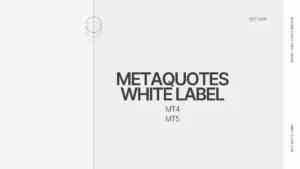A Guide to PAMM and MAM Accounts
The foreign exchange market, with its vast potential and 24/7 activity, beckons many aspiring investors. However, navigating the complexities of currency trading can be daunting, especially for beginners. PAMM (Percentage Allocation Management Module) and MAM (Multi-Account Manager) accounts offer a compelling solution, allowing you to leverage the expertise of experienced traders while managing your investment risk.
What is a PAMM Account?
A PAMM account, or Percentage Allocation Management Module account, is a form of managed forex account where multiple investors pool their funds to be managed by a professional trader. This allows investors to benefit from the expertise of the trader without needing to trade on their own.
How PAMM Accounts Work:
- Pooling Funds: Investors contribute their money into a single PAMM account managed by a professional trader.
- Trading: The trader uses the pooled funds to conduct trades in the forex market.
- Profit and Loss Distribution: Profits and losses are distributed among the investors based on their individual contributions to the account.
- Manager’s Fee: The trader earns a performance fee, typically a percentage of the profits generated.
For example, if an investor contributes 20% of the total funds in a PAMM account, they will receive 20% of the profits or bear 20% of the losses. This proportional distribution ensures fairness and transparency.
What is a MAM Account?
A MAM account, or Multi-Account Manager account, also involves professional traders managing funds on behalf of multiple investors. However, MAM accounts offer more flexibility and customization compared to PAMM accounts, catering to investors with different risk appetites and trading preferences.
How MAM Accounts Work:
- Multiple Sub-Accounts: The trader manages several sub-accounts, each with its own strategy and risk level.
- Customization: The trader can apply different leverage levels and risk settings to each sub-account based on the preferences of the respective investors.
- Individual Profit and Loss Allocation: Profits and losses are allocated to each sub-account individually, reflecting the specific strategy and risk exposure.
This structure allows MAM accounts to provide a tailored investment experience, where each investor’s account can be managed according to their individual requirements.
The Key Differences Between PAMM and MAM
While both PAMM and MAM cater to investors seeking professional forex management, they differ in how they allocate funds:
- PAMM (Percentage Allocation Management Module):
- Pool System: Funds from multiple investors are pooled into a single master account managed by the money manager.
- Profit/Loss Sharing: Profits and losses are distributed among investors based on their percentage contribution to the overall pool.
- Limited Control: Investors in a PAMM account typically have limited control over individual trades executed by the money manager.
- MAM (Multi-Account Manager):
- Individual Accounts: Each investor maintains a separate trading account.
- Copying Strategy: The money manager’s trades are automatically copied and proportionally replicated across each linked investor account.
- Greater Flexibility: MAM accounts may offer investors more flexibility, allowing them to adjust the copied trade volume based on their individual risk tolerance.
Selecting the Right Account for You:
The choice between a PAMM and MAM account depends on your investment goals and risk tolerance:
- For Investors Seeking Simplicity: PAMM accounts can be a good option if you prefer a simple setup and are comfortable with a predetermined profit/loss distribution based on your percentage share.
- For Investors Who Value Control: MAM accounts might be more suitable if you desire more control over your investment. You can potentially adjust the copied trade volume to align with your risk tolerance.
Beyond PAMM and MAM: Essential Considerations
Before delving into PAMM or MAM accounts, here are some crucial factors to weigh:
- Brokerage Selection: Ensure you choose a reputable and regulated forex broker that offers PAMM/MAM accounts.
- Money Manager Research: Meticulously research the money manager’s track record, trading strategy, and risk management approach. Choose a manager whose investment philosophy aligns with your own.
- Fees and Performance: Understand the fees associated with PAMM/MAM accounts, which may include management fees and performance-based bonuses. Analyze the manager’s historical performance to gauge their effectiveness.
Comparison of PAMM and MAM Accounts
| Aspect | PAMM Account | MAM Account |
|---|---|---|
| Definition | A managed forex account where multiple investors pool their funds into a single account managed by a professional trader. | A managed forex account where a trader manages multiple sub-accounts, each with its own strategy and risk level, for different investors. |
| Fund Allocation | Funds from investors are aggregated into a single PAMM account, which the trader uses for trading. | Each investor has an individual sub-account managed by the trader, with investments and profits/losses tracked separately. |
| Control | Investors have limited control over individual trades executed by the trader in the PAMM account. | Investors can adjust the volume of trades copied to their sub-account and set risk parameters according to their preferences. |
| Profit/Loss Distribution | Profits and losses are distributed among investors based on their percentage share in the PAMM account. | Profits and losses are allocated individually to each investor’s sub-account, reflecting the performance of their specific strategy. |
| Flexibility | Less flexible as all investors share the same trading strategy and risk level set by the trader. | More flexible as each investor can customize their risk settings and trading volume according to their risk tolerance and investment goals. |
| Suitability | Best suited for investors who prefer a hands-off approach to forex trading and are comfortable with pooled investment management. | Ideal for investors who want more control over their investment strategy and prefer tailored risk management according to their individual preferences. |
| Advantages |
|
|
| Disadvantages |
|
|
Conclusion: PAMM and MAM Accounts
PAMM and MAM accounts offer a unique opportunity for investors to participate in the forex market while leveraging the expertise of experienced traders. By carefully researching money managers, understanding the differences between PAMM and MAM models, and selecting a reputable broker, you can pave the way for a potentially rewarding forex investment experience. Remember, responsible investing always involves due diligence and a clear understanding of the associated risks.




